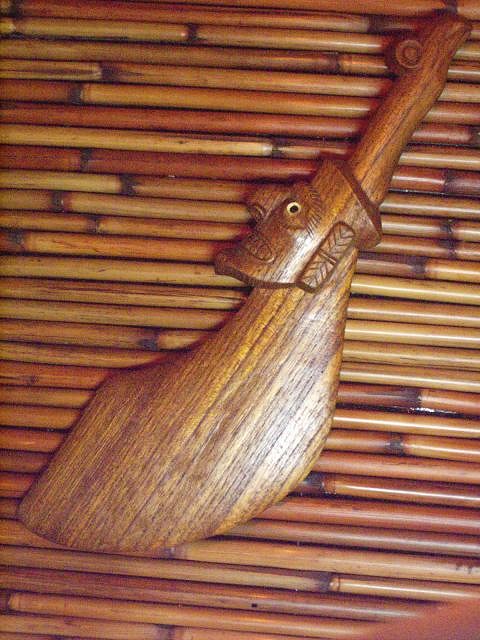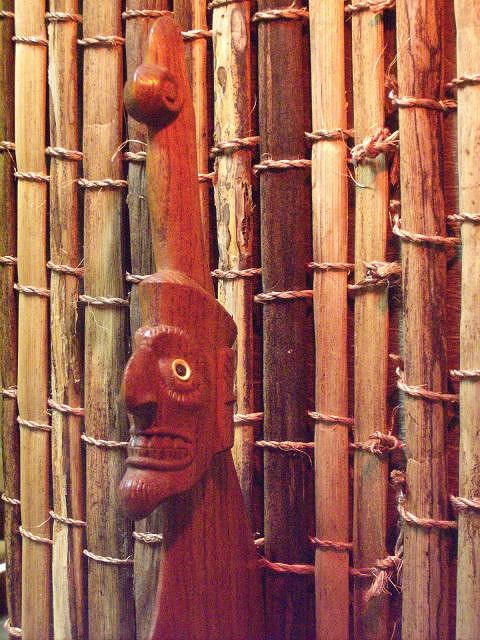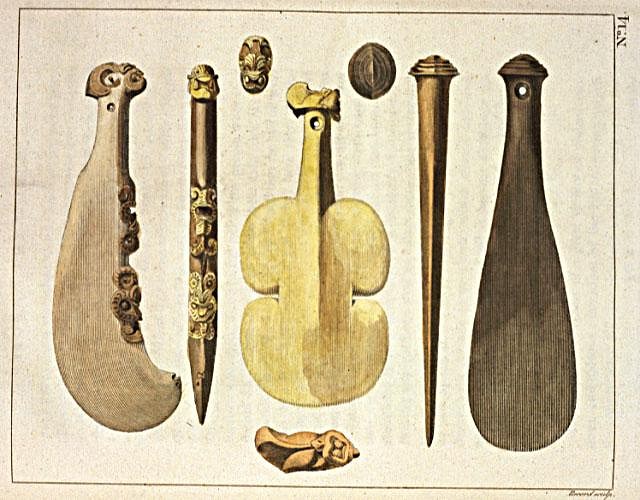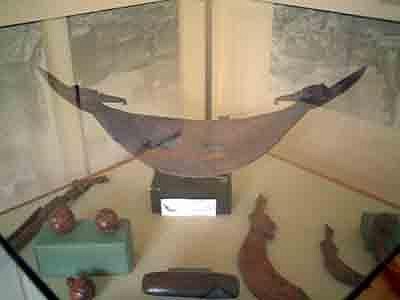Tiki Central / Collecting Tiki
Name That War Club/Knife
Pages: 1 6 replies
|
M
MrBaliHai
Posted
posted
on
Sat, Mar 27, 2010 2:35 PM
Found this in a local antique store today. It sure looks like it might be a variation on the Easter Island Kava Kava/Birdman motif, but the ears are wrong. Anybody seen one of these before? Did I get stuck with a souvenir from Tijuana?
|
|
H
hottiki
Posted
posted
on
Sat, Mar 27, 2010 9:36 PM
Unlike the Fijians and other Polynesians to the westward, who did great execution with their long war clubs, these natives used in fighting only the patoopatoo, or the meré, like that of the Maori, except that they were invariably made of wood. They possessed a long club, a little expanded and flattened at one end, and the other carved into a head with a double face with eyes made of obsidian and bone; but this was carried as a batôn of office before the chiefs and used only for that purpose.http://www.sacred-texts.com/pac/ei/ei32.htm [ Edited by: hottiki 2010-03-27 21:46 ] |
|
B
bigbrotiki
Posted
posted
on
Sun, Mar 28, 2010 12:37 AM
Sounds like a good description, I think it's definitely an Easter Island souvenir. I can't post any similar ancient pieces, my Thor Heyerdahl library is not with me. Also, it would not be uncommon for Polynesian tourist art that different styles from other island groups are mixed, like a Kava Kava man and the shape of a Maori war club. Tikis are carved and sold in Tonga, which never had any, and Tiki MASKS never existed in any of the islands, but are gladly sold to the happy traveller. [ Edited by: bigbrotiki 2010-03-28 00:43 ] |
|
M
MrBaliHai
Posted
posted
on
Sun, Mar 28, 2010 4:24 AM
Thanks for the replies. Here are some Maori Patoo Patoo clubs, which look similar to mine in shape, but the carvings are definitely Maori:
I agree with you, bigbro. I think that this is some souvenir carver's attempt at mixing motifs from Rapa Nui and New Zealand.
[ Edited by: MrBaliHai 2010-03-28 04:25 ] |
|
H
hottiki
Posted
posted
on
Sun, Mar 28, 2010 10:18 AM
A short wooden club, known as paoa, that belonged to the ancient Easter Islanders. It is 47 cm long and 12 cm wide at its widest point. It was found by V. Champeval, from Tulle, in 1872 |
|
H
hottiki
Posted
posted
on
Tue, Mar 30, 2010 11:53 PM
Rapanui objects at the Fonck Museum, Vina del Mar Chile |
|
B
bigbrotiki
Posted
posted
on
Wed, Mar 31, 2010 2:01 PM
Dang, so it IS based on an original. Hottiki scores! Great research work. There even seems to be a smaller version right next to the big one. |
Pages: 1 6 replies






